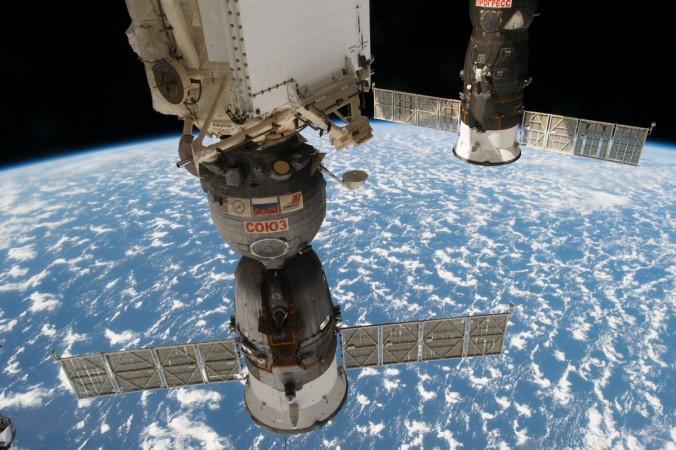
The edge of space, or the imaginary line where the Earth's atmosphere ends and space begins just got a bit closer to Earth, about 19.3 km closer.
While nothing physically moved, according to a new study, the exact point where the Earth's atmosphere ends has been redefined. The new paper, titled "The edge of space: Revisiting the Karman Line" by astrophysicist Jonathan McDowell the point at which space begins needs to be moved further down than previously believed.
If astrophysicist Jonathan McDowell's calculations are correct, the cosmic boundary where the laws of airspace suddenly give way to the laws of orbital space might be a lot closer than we think — a full 12 miles closer than previous estimates suggest.
"The argument about where the atmosphere ends and space begins predates the launch of the first Sputnik," he writes.
"The most widely—but not universally—accepted boundary is the so-called Karman Line, nowadays usually set to be 100 km altitude..." however, there have been suggestions to move the line from between 30 km to 1.5 million km, he explained.
Committee on Peaceful Uses Of Outer Space (COPOUS), established in 1959, it is the UN body that deals with astronautics and the then USSR repeatedly proposed that Karman Line be either 100 or 110 km from sea level, but the US reportedly rejected any definition of where outer space is. One of the reasons pointed out in the paper is that there are large variations with atmospheric properties that make defining a set boundary to the atmosphere completely futile.
A true boundary of space based on physical arguments, therefore, was never agreed upon by the astronomical community.
However, McDowell argues that there is indeed a moderately-well-defined boundary of where the atmosphere ends and space begins. While it coincides within the Karman line's original range of between 75 and 100 km, this paper says it is close to 80 km, and not 100 km.
Why does it matter?
It is known that beyond a certain altitude, there is no air, and microgravity takes over, while people seem to float up there, so why does it matter where space officially begins? McDowell points out four reasons as to why there is a need for a clear definition if the Karman Line.
No national boundaries in space similar to the way international waters work.
It is possible to place objects in space in motion, relative to the Earth for extended periods of time- this ranges from a few days to thousands of years. This can be achieved without the need to refuel.
Large areas are swept by objects in space at a given time. That means any space activity is likely to extend over a wide area rather than be localised like most Earth-based activities.
Destructive potential of collisions in space is massive and their effects also are felt over a wide area.
Why the Karman Line needs to be moved
McDowell points out that the laws of the atmosphere and the laws of space are different from a scientific point of view. The Karman Line should sufficiently separate the two, so he pored over data regarding the inhabitants of the region- satellites. For this study, over 43,000 satellite's data was used.
Of all them, about 50 satellites stood out, notes a report by the NBC. During re-entry into the atmosphere as their missions came to an end, two satellites, he found, were able to complete at least two full orbits at altitudes below 100 km before burning up. One of them, the Soviet Elektron-4 satellite, for example, survived 10 whole orbits at around 84 km before entering the atmosphere enough to burn up in 1997.

That made it clear, he notes, that physics of space is still somehow valid below the Karman Line, which is at 100 km. McDowell then used a mathematical model to calculate the exact point where satellites lost their orbit and burned up in the atmosphere. He found that this burning up might happen at any point between 65 km and 88 km. Also, when a satellite dropped below the 80 km mark, there is no hope to escape a fiery death.
McDowell chose the 80 km mark as the Karman Line because of this reason, notes the report.
The new Karman Line, however, is unlikely to ever gain traction and be legally agreed upon by the US and most other countries, says McDowell. That is because of the way airspace works. The region directly above a country is considered to be a part of that country, but outer space is free range, any one can go there.
If space is defined at 80 km, and the US, for example, flies an unauthorized satellite 65 km over Russia or China, then it could be interpreted as an act of military aggression. Hence, the US is always opposed to any clear-cut definitions of outer space, and it remains true for other nations as well.









